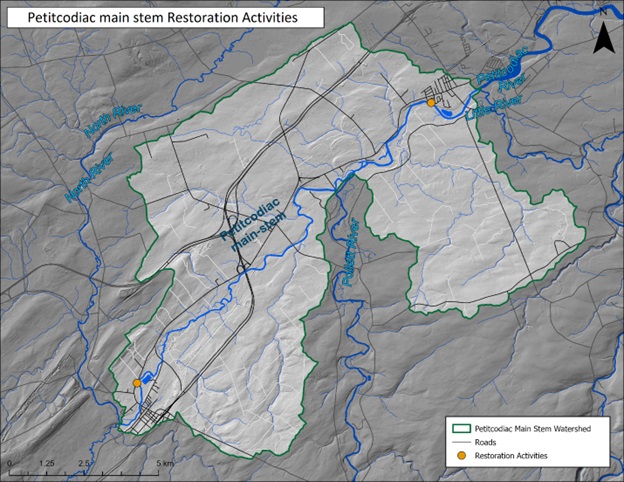Fourth Level Assessment – Aquatic Habitat Rehabilitation Plan
Fourth Level Assessment
Summary of Issues Identified from Information on Current Impacts
Culvert surveys by the Petitcodiac Watershed Alliance as part of their Broken Brooks program noted 3 culverts that were full barriers to fish passage and 1 culvert that was a partial barrier to passage (Figure 8) within the watershed, a total of 4 impacted culverts. With 95 crossings identified (Figure 7) and only 37 assessed (Figure 8), another factor identified here is the scope for additional assessments of water crossings within the main stem of the Petitcodiac to identify other water crossings in need of attention. Most of the assessed crossings are near Salisbury within the Bannister Brook Composite portion of the main stem. Few assessed crossings are in the O’Blenis Brook Composite in and around the Village of Petitcodiac, indicating that additional work could be done there in particular to address that information deficit and identify future targets for remediation.
Summary of Issues Identified from Aquatic and Riparian Habitat Assessment
Knowledge about wildlife within this portion of the river is concentrated at the head of tide, where the FNT has been operating. Upstream of that area, most of what is known about SAR species comes either as a result of brook floater surveys in 2018, or anecdotal data provided by anglers. This suggests that there might be some value to be had in projects further upstream to address such knowledge gaps.
Rapid Geomorphic Assessments (RGAs) identified roughly 66% of the reaches along the main stem as “in adjustment” indicating that instability is widespread. In only about 5% of the main stem’s length was Channel Stability found to be “stable”. Widening is the primary geomorphic process taking place on 71% of reaches. Disturbance within the main stem is widespread. The goal of RGAs is to identify and prioritize areas needing the most attention- however with so much of the main stem “in adjustment” other factors – such as landowners, and significance to wildlife take on even greater importance in determining which projects to undertake.
Restoration Activities Undertaken
Two restoration projects have been done within the main stem of the Petitcodiac River. These have both focused on bank stabilization (Figure 23). The first was done in 2015 near the Village of Petitcodiac by the Petitcodiac Watershed Alliance and the second was a two-year project in 2020 and 2021 within the Village of Salisbury Fort Folly Habitat Recovery.













